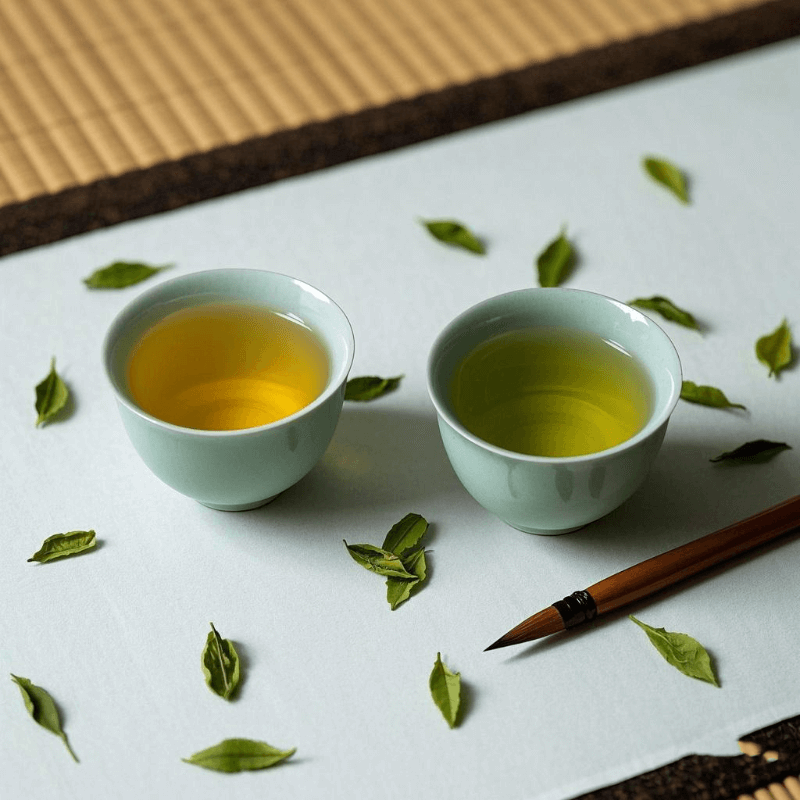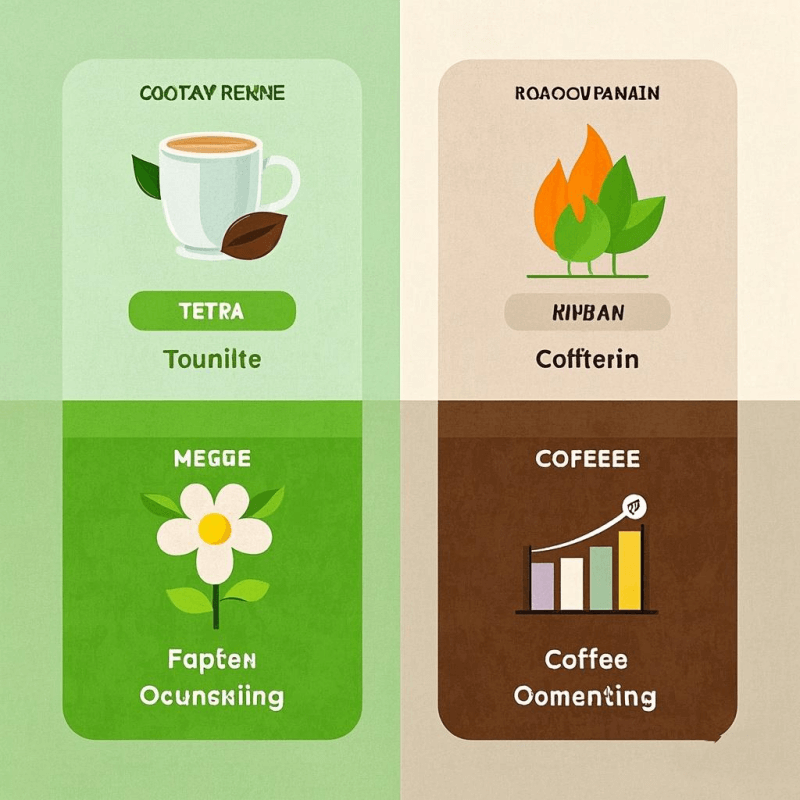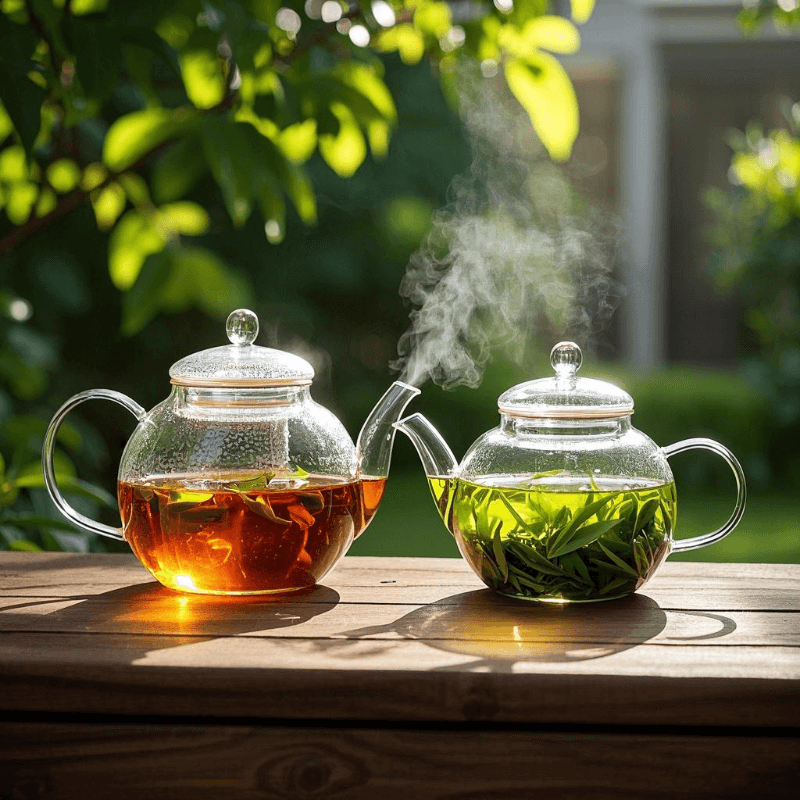In the vast world of tea, oolong and green teas stand out as two of the most celebrated varieties, each with a dedicated following. But for newcomers or those seeking to expand their tea repertoire, the question arises: how do these teas differ, and which is right for you? Oolong tea vs green tea is more than a matter of taste—it’s about production methods, health benefits, and even the mood they evoke.
This comprehensive guide will dissect the nuances between these two teas, from their processing to their impact on your well-being. Whether you’re a seasoned tea drinker or just starting out, understanding their differences will help you make an informed choice that aligns with your preferences and lifestyle.
1. Introduction: Why Compare Oolong Tea vs Green Tea

Tea enthusiasts and health-conscious individuals alike often find themselves torn between oolong tea vs green tea. Their popularity stems from distinct characteristics: green tea is lauded for its fresh, grassy notes and antioxidant content, while oolong tea captivates with its complex, layered flavors that range from floral to roasted.
But the comparison runs deeper than taste. Production methods, oxidation levels, and even cultural significance set them apart. As tea sommelier James Norwood Pratt notes, “Choosing between oolong and green tea is like choosing between a symphony and a solo performance—both beautiful, but offering entirely different experiences.”
By exploring their differences, you’ll not only enhance your appreciation for each tea but also learn how to incorporate them into your daily routine for maximum enjoyment and benefit.
2. What Is Oolong Tea and How Is It Made
Oolong tea is a semi-oxidized tea that originates from China and Taiwan, with a history spanning centuries. Unlike green tea (which is unoxidized) or black tea (fully oxidized), oolong undergoes partial oxidation (10–80%), a process that gives it its unique character.
The Making of Oolong Tea
- Harvesting: Leaves are picked in the morning when their flavor compounds are most concentrated.
- Withering: Leaves are spread out to lose moisture, often under the sun or in a cool breeze.
- Oxidation: Leaves are gently bruised to initiate oxidation, a process that develops their flavor and color.
- Firing: Oxidation is halted by heating, either through pan-frying or baking.
- Shaping: Leaves are rolled or twisted into their characteristic forms, from tight curls to semi-open leaves.
Fun Fact
Premium oolongs like Da Hong Pao (Big Red Robe) are often hand-picked and processed, a labor-intensive method that contributes to their higher price point. Discover the subtle beauty of oolong tea with our premium leaves, sourced from renowned tea gardens.
3. What Is Green Tea and How Is It Processed
Green tea, the unoxidized counterpart, has a more straightforward production process but is no less revered. Originating in China, it’s now enjoyed worldwide for its fresh, vibrant qualities.
The Making of Green Tea
- Harvesting: Leaves are picked young, often before the first flush in spring for premium varieties.
- Fixation: The key step that differentiates green tea—heat is applied immediately after picking to inactivate enzymes, preventing oxidation. This can be done by pan-frying (Chinese method) or steaming (Japanese method).
- Rolling: Leaves are rolled to release oils and form their shape, from needle-like to spiral.
- Drying: Leaves are dried to stabilize them for storage.
Cultural Note
Japanese green teas like matcha and sencha are steamed, resulting in a more vibrant green color and grassier flavor, while Chinese green teas like Longjing (Dragon Well) are pan-fried, offering a toastier profile.

4. Key Differences in Taste, Aroma, and Color
The most immediate differences between oolong tea vs green tea lie in their sensory profiles:
Taste
- Oolong Tea: Flavor ranges from light and floral (e.g., Tieguanyin) to rich and roasted (e.g., Da Hong Pao). It often has a smooth, creamy mouthfeel with a lingering finish.
- Green Tea: Tends to be grassy, vegetal, or marine (umami), with a crisp, refreshing taste. Some varieties can be slightly bitter or astringent if oversteeped.
Aroma
- Oolong: Aromas are complex and layered—think orchids, roasted nuts, honey, or even dark chocolate, depending on oxidation level.
- Green Tea: Aromas are fresh and bright, often described as grassy, floral, or vegetal (like spinach or seaweed in Japanese greens).
Color
- Oolong: Brewed color varies from pale gold (lightly oxidized) to deep amber (heavily oxidized).
- Green Tea: Brews to a light yellow-green or bright green, depending on the variety and steeping method.
Comparison Table
| Aspect | Oolong Tea | Green Tea |
| Oxidation | 10–80% semi-oxidized | 0–10% unoxidized |
| Taste Profile | Complex, layered (floral to roasted) | Fresh, grassy, umami |
| Aroma | Orchid, nutty, honey | Grass, seaweed, floral |
| Brew Color | Gold to deep amber | Light green to yellow-green |
5. Health Benefits: Oolong Tea vs Green Tea
Both teas offer impressive health benefits, but their profiles differ due to oxidation:
Antioxidant Content
- Green Tea: Rich in catechins, particularly EGCG (epigallocatechin gallate), which has been studied for its antioxidant properties. A 2020 study in Antioxidants found green tea’s EGCG content to be higher due to its unoxidized state.
- Oolong Tea: Contains a mix of catechins and theaflavins (formed during oxidation), which may offer different antioxidant effects. A Journal of Agricultural and Food Chemistry study showed oolong’s antioxidant activity increases with moderate oxidation.
Weight Management
- Green Tea: Often linked to metabolism boost, with studies like those in The American Journal of Clinical Nutrition suggesting it may enhance fat oxidation.
- Oolong Tea: Some research indicates oolong may aid in weight loss by improving lipid metabolism. A 2009 study found participants who drank oolong tea lost more weight than those on a placebo.
Heart Health
- Both Teas: May support heart health by lowering LDL cholesterol and improving blood pressure. A meta-analysis in Nutrition Reviews found consistent evidence for tea’s role in cardiovascular health.
Mental Alertness
- Green Tea: Contains less caffeine (20–45mg/cup) but still provides a gentle lift, combined with L-theanine for calm focus.
- Oolong Tea: Moderate caffeine (30–50mg/cup) paired with L-theanine, offering a more sustained energy boost without jitters.
6. When to Choose One Over the Other
Deciding between oolong tea vs green tea depends on your preferences and needs:
Choose Oolong Tea When:
- You crave complex, layered flavors that evolve over multiple steeps.
- You want a moderate caffeine boost with a smooth, non-jittery effect.
- You’re pairing tea with rich foods (e.g., roasted meats or desserts), as its bold flavors can stand up to strong tastes.
- You appreciate the ritual of gongfu cha (small-cup brewing) to explore flavor nuances.
Choose Green Tea When:
- You prefer fresh, grassy flavors and a crisp, refreshing finish.
- You want maximum EGCG content for antioxidant benefits.
- You’re looking for a low-caffeine option (though note that green tea still contains some caffeine).
- You enjoy cold brewing for a refreshing summer drink.
Pro Tip
Not sure which to try? Start with a lightly oxidized oolong like Alishan High Mountain, which bridges the freshness of green tea with oolong’s subtle sweetness. Browse our oolong tea collection for every taste preference to find your perfect match.
7. Conclusion: Finding the Right Tea for Your Lifestyle

The debate of oolong tea vs green tea isn’t about choosing a “better” tea but about understanding which suits your palate and lifestyle. Green tea appeals with its vibrant freshness and antioxidant-rich profile, while oolong captivates with its complex flavors and balanced energy boost.
Ultimately, there’s no wrong choice—many tea lovers enjoy both, switching between them based on mood, time of day, or even season. Light oolongs make a perfect morning pick-me-up, while green tea shines as an afternoon refresher.
Ready to explore these teas for yourself? Elevate your tea experience with authentic oolong teaware or discover our premium green tea selections. Whichever you choose, each cup is an invitation to savor the beauty of tea in its many forms.
Remember, the best tea is the one you enjoy drinking—so pour a cup, breathe in the aroma, and let your taste buds be your guide.

Pingback: Oolong Tea Versus Green Tea: Key Differences for Your Perfect Brew